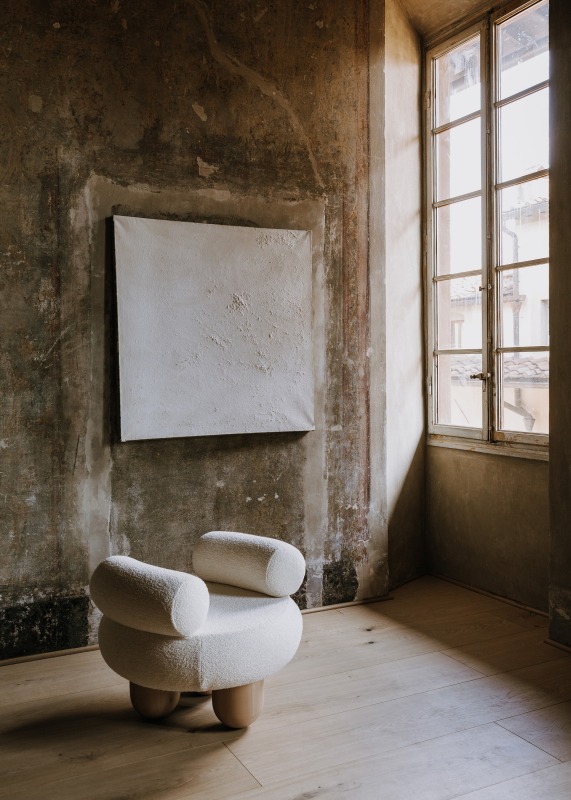Tuscany, the double life
A trio of artists remade the facades of a Pisan village. The sugar rooms suites reinterpret history. While design allies itself with craftsmanship to experiment with new synergies. "Anyone who says that nothing happens here is wrong." Word of Massimo Vitali
At the monastery of La Verna , in that of Arezzo, St. Francis withdrew to reflect, think and pray. Tuscan hospitality was already proverbial then. Today it is undoubtedly more comfortable and style-conscious, but the concept is the same: welcoming to give an experience that goes beyond an overnight stay. And above all to reconcile reflection and exchange. This is the principle of Numeroventi, a hybrid that intertwines artistic hospitality and a forge of creatives. In the heart of Florence , in a 16th century building, Martino di Napoli Rampollahas created an innovative reality that wants to put different professionals in contact giving the opportunity to artists and designers to live in a context steeped in contemporary culture. The lofts available to guests are also exhibition spaces with works by Lorenzo Brinati, painter, Rich Stapleton, photographer, and Duccio Maria Gambi, designer-craftsman, while the artists who choose Numeroventi for a residence can count on numerous contacts and experiences to share. with the local community. Although in a different way, another reality oriented to facilitate creative work is Villa Lena. The estate, immersed in the Pisan countryside and now being renovated by the architects Hesselbrand, proposes itself in the dual role of boutique hotel and artist residence, with the possibility for those who propose their candidacy to live and carry out projects for two months in a stimulating context. Before leaving, the authors leave at least one work at the Villa which boasts an increasingly interesting collection. From the countryside to the city, even the newborn Sugar Rooms di Arezzo focuses on the immersive experience. The entrepreneur Beppe Angiolini has revived a building in the historic center by adding a luxury hostel designed by Roberto Baciocchi to the concept store on the first floor (designed by Vincenzo De Cotiis). Eleven rooms that combine fragments of history and contemporary interventions: thoughtful, but enough to dream.

